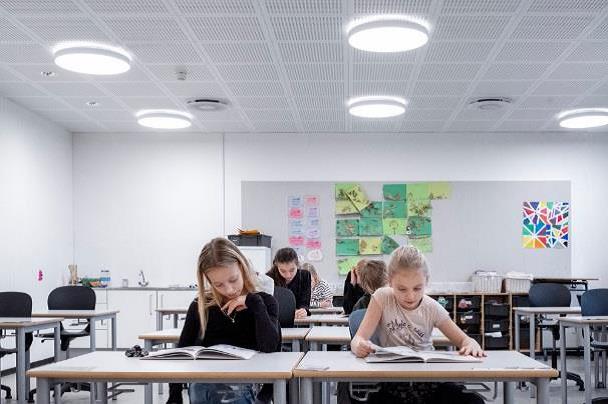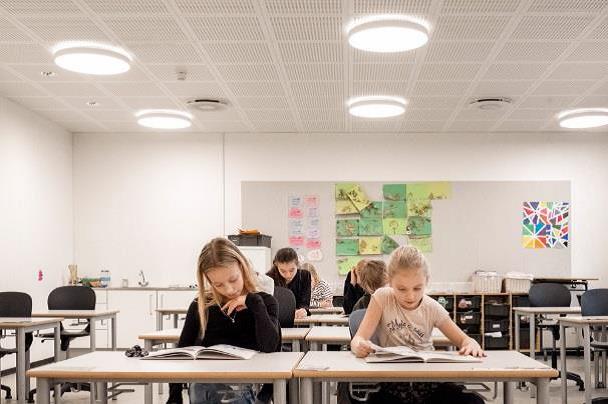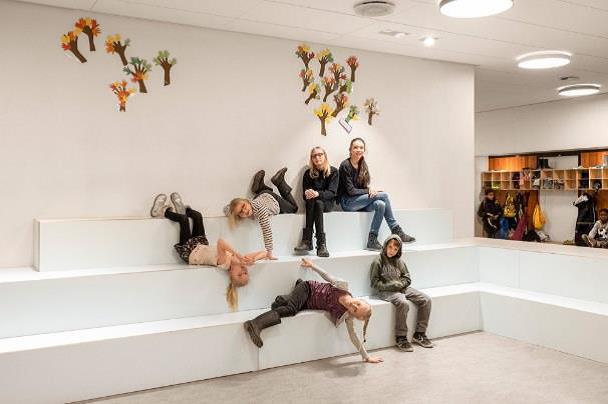More and more studies and cases have shown the effects of artificial lighting on people’s physical and psychological well-being. Suitable lighting at right time helps to improve learning and working productivity as well as enhance the quality of relaxation. A primary school in Denmark has adopted human-centric-based dynamic lighting solutions to advance the learning environment of students.
Researchers at the University of Aalborg developed the specific design criteria for the lighting moods in the classroom and Zumtobel turned them into a reality with its Active Light. The dynamic lighting modes of the product are designed to illuminate the classroom with the right tune and color according to different activities.
Zumtobel noted that teachers change the lighting mood three times a day on average. The light with cooler color is on when the class begins to help students concentrating. After lunch follows the inevitable afternoon lull, yet teachers can use cool-white light to actively counteract student fatigue and increase attention.


(Stimulating cool-white light to boost energy of the students; image: Zumtobel)
During group exercise, slightly subdued warm-white light provides a relaxing ambience and gains top marks for supporting social interaction. The informal lighting scenario also boosts the effectiveness of breaks and relaxation.

(Warm-white light for relaxing ambience; image: Zumtobel)
Seasonal daylight differences and the spatial arrangement of the classrooms all influence the lighting conditions. The internet-enabled and app-based lighting management system enable teachers to customize the color settings and light intensity of the classrooms.
Active Light provides lighting scenarios that really support learning at the Herstedlund School.





 CN
TW
EN
CN
TW
EN








